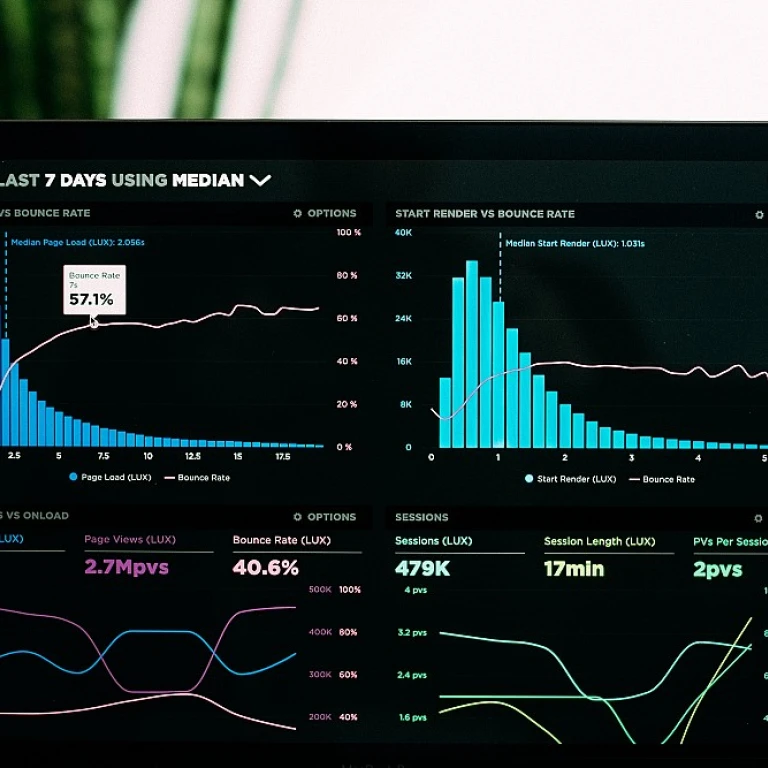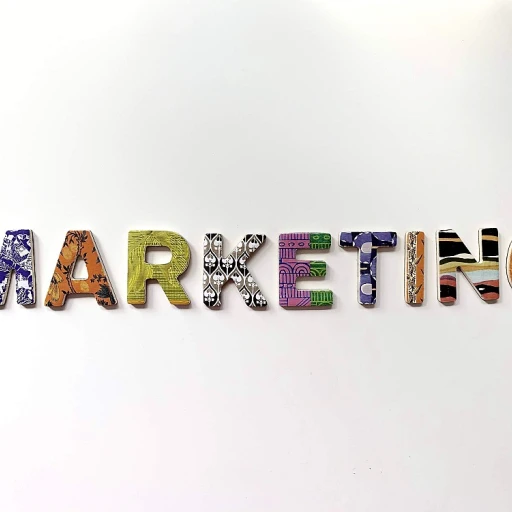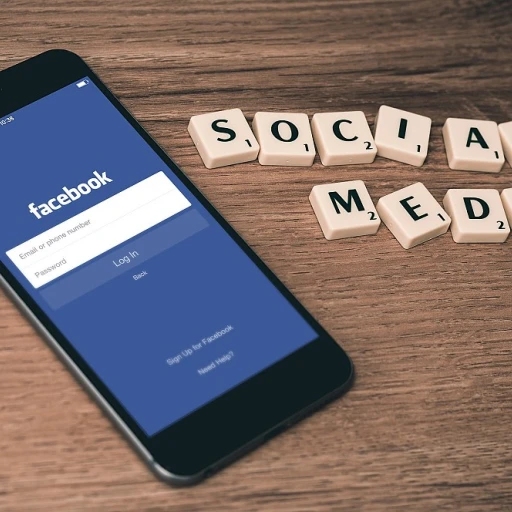
Understanding Reach in SEO
Defining and Measuring Reach in Search Engine Optimization
In the world of search engine optimization (SEO), reach is a pivotal metric that businesses track to understand how their content engages with audiences across various digital platforms. It’s more than just numbers—reach helps brands grasp the extent of their message's exposure, either through organic or paid avenues. Exploring the idea of reach in SEO involves looking at both organic reach and paid reach. Organic reach refers to the number of unique users who come across your content without paid promotion. This could be from search engine results, where well-optimized content appears thanks to relevant keywords and robust SEO strategies. On the other hand, paid reach involves utilizing advertising techniques to ensure content reaches more people, often through platforms like Facebook or Google Ads. This strategic balance is crucial in digital marketing initiatives. Several factors impact your reach. These include the timing and frequency of posts, especially on social media platforms. Influencer marketing also plays a role, where social media influencers introduce your brand to their followers, enhancing total reach and media impressions. For marketers aiming to grasp the dynamics behind their reach, tools like Google Analytics provide vital insights. It allows businesses to reflect on metrics such as total number of impressions and unique users to calculate reach effectively. By understanding these analytics, brands can tailor their digital strategies to capture a larger audience, thus magnifying their media cost-effectiveness. In essence, mastering reach is about understanding where your brand stands and how well it communicates its message to its target audience. It involves delving deep into the numbers—reach frequency, number of followers, and the number of impressions—and molding them into actionable marketing reach insights. For more insights on how videos and podcasts can fit into your SEO strategy, check out this informative piece on video podcast SEO strategies.The Role of AI in Calculating Reach
The AI Revolution in Metrics Calculation
Artificial intelligence has brought about a transformative shift in how we calculate reach within the realm of digital marketing. Traditionally, determining marketing reach and social media reach involved manual processes, relying heavily on metrics related to number impressions on platforms like Facebook, Instagram, and others. The introduction of AI into these calculations is a game-changer, drastically improving accuracy in measuring total reach and reach frequency. AI utilizes advanced algorithms and machine learning techniques to process large datasets. This capability helps in effectively determining metrics such as reach impressions, number unique users, and total number of audience interactions with content. By sifting through the vast number of influencer marketing campaigns, paid reach statistics, and organic reach data, AI can offer a clearer picture of how your brand is perceived across various platforms.The Power of AI in Unique User Identification
One of the key developments is AI's ability to accurately calculate the number of unique users interacting with a post. Traditional methods sometimes fail to differentiate between repeated interactions by the same person versus genuine unique engagements. AI's prowess in identifying unique users offers more precise insights, helping brands and marketers tailor their strategies for optimal media reach. AI algorithms consider the context and patterns behind user interactions, offering analytics that go beyond just numbers or impressions. This means businesses can now better allocate resources and budget their media cost effectively, knowing which content truly connects with their audience. Harnessing AI-driven analytics for calculating marketing reach gives marketers a distinct advantage, creating strategies that resonate with real people, rather than just numbers.Connecting Broader Insights to Branding Strategies
As AI continues to define the landscape of social media and digital interactions, its application in SEO and reach analytics remains pivotal. It's no longer just about raw numbers but understanding the dynamics and implications these metrics hold in building robust, engaging branding strategies. For further insights, exploring top branding strategies in B2B tech companies can offer a broader perspective on utilizing AI-driven calculations to foster growth and connect with unique audiences effectively. This underpins a broader understanding of how AI shapes marketing strategies in today's rapidly evolving digital environment.AI Tools for Enhanced Reach Calculation
Leveraging AI Tools for Enhanced Reach Metrics
Artificial intelligence has revolutionized the way brands approach marketing reach, enabling more sophisticated calculations and strategies. By utilizing AI tools, businesses can achieve a deeper understanding of their content's impact across various social media platforms.- Improved Accuracy: AI-driven tools enhance the precision of reach metrics by analyzing a vast number of factors, including audience engagement, number of impressions, and user behaviors on platforms like Facebook and Twitter.
- Audience Insights: AI tools can identify unique users and demographics, offering key insights into audience behavior which helps tailor marketing strategies. By analyzing these social media metrics, businesses can refine their marketing reach to engage with their target audience more effectively.
- Predictive Analytics: AI technologies embrace predictive analytics to forecast potential reach and impression metrics. This creates opportunities for brands to preemptively adjust their content strategies, thus optimizing their marketing efforts.
- Cost Efficiency: With AI tools calculating reach, businesses can strategically manage media costs by identifying the most effective platforms and influencers, maximizing marketing reach without overspending.
- Content Performance: AI tools analyze content performance to highlight which posts or marketing strategies successfully engage people. This data can direct future social media and digital marketing strategies, ensuring that the media reach continues to grow over time.
Challenges in AI-Driven Reach Calculation
Overcoming Obstacles in AI-Based Reach Calculation
Navigating the landscape of AI in reach calculation presents its own set of challenges. As digital marketers seek to determine the total reach of their campaigns, they face a few hurdles related to AI systems and their accuracy. Understanding these challenges allows brands to better harness AI-driven tools while optimizing their strategies.First, the sheer number of platforms and social media channels complicates the task of calculating reach. Each platform—be it Facebook, Instagram, or Twitter—has its own set of metrics, from number impressions to unique users. Integrating these varying data sets into a cohesive AI solution can be difficult. This diversity can skew data analytics, making it crucial for marketers to ensure consistent conversion of metrics.
Moreover, AI algorithms require large data volumes to function effectively. The challenge of data privacy and compliance with regulations such as GDPR often creates hurdles in collecting the necessary data. Successful AI models must navigate these issues without compromising the ethical standards brands aspire to uphold.
Another concern is the accuracy of AI predictions. The effectiveness of AI in calculating organic and paid reach lies in its ability to predict future social interaction trends. However, this familiarity with social patterns can sometimes backfire when unpredictable events or swiftly changing user behaviors alter media reach drastically. To overcome this, many in the field turn to advanced forms of analytics, investing in AI systems that constantly evolve and recalibrate based on current data. Through ongoing algorithm refinement, brands can leverage AI tools to provide increasingly accurate calculations, embracing both marketing reach and reach frequency.
In conclusion, while these challenges exist, they are not insurmountable. By recognizing and addressing these obstacles, businesses can use AI to enhance and calculate reach effectively, driving growth and engagement across diverse channels.
Case Studies: Successful AI Applications in SEO
Real-World Success Stories of AI in SEO
When it comes to implementing AI in calculating reach for SEO purposes, several companies have set remarkable examples, leveraging this technology to boost their digital marketing strategies effectively. Here are a few real-world cases demonstrating the potential of AI-enhanced SEO.- Brand X Revolutionizing Social Media Reach: Leveraging AI to streamline their social media presence, Brand X utilized AI algorithms to analyze social media trends, effectively amplifying their social media reach. By understanding key metrics such as the number of impressions and unique users on platforms like Facebook, they orchestrated content that resonated more with their audience. This strategic approach increased both their organic reach and paid reach, effectively enhancing the brand's visibility.
- Data-Driven Expansion of Audience Reach: Another striking example involves a digital marketing agency adopting AI tools to calculate and enhance their clients' media reach. By utilizing AI-driven analytics, they were able to determine the most suitable content strategies that engaged the highest number of unique users. This approach helped them optimize their post scheduling and reach frequency, thereby maximizing their total reach and number of followers.
- Influencer Marketing and AI: Influencer campaigns, when paired with AI for precision targeting, have been game changers for brands looking to increase their number of impressions and media cost efficiency. An e-commerce brand, by working closely with influencers, utilized AI not only to calculate reach impressions effectively but also to select influencers whose content would organically reach the desired number of people. The result was a calculated marketing reach that aligned perfectly with their brand objectives.
Future Trends: AI and Reach in SEO
Anticipating the Evolution of AI in SEO
As digital marketing landscapes continually evolve, the integration of artificial intelligence in search engine optimization is paving the way for numerous advancements in calculating reach. The journey of AI in this realm is just beginning, with future innovations set to revolutionize how brands engage with their audiences. Let's explore some of the anticipated trends and advancements.
Personalization and User Experience
AI's capacity to process vast amounts of data contributes significantly to enhancing the personalization of content. Analyzing user behaviors, preferences, and interactions on platforms like Facebook and other social media channels allows AI to generate highly tailored content. This personalization not only improves user experience but also optimizes marketing reach by connecting effectively with unique users, ultimately influencing the total number of impressions and engagement.
Harnessing AI in Influencer Marketing
The number of influencers and brands utilizing AI to calculate reach and impressions is on the rise. Automation tools powered by AI grant marketers the ability to assess media reach, marketing reach, and the number of followers with greater precision. By understanding various metrics through analytics, influencers can craft campaigns that better resonate with their audiences, enhancing content performance and extending their digital presence.
Advanced Predictive Analytics
Predictive analytics is another frontier where AI is expected to make substantial contributions. By analyzing historical data and trends, AI can predict future outcomes and help brands strategize accordingly. This capability is instrumental for maximizing media cost efficiency, gauging total reach, and optimizing both organic and paid reach strategies. Marketers harnessing predictive analytics will be better positioned to execute informed decisions, leading to higher metrics of success across platforms.
Integration with Emerging Platforms
As new social media platforms emerge, AI-driven SEO tools are expected to adapt swiftly. Staying updated on how metrics like number impressions and reach frequency perform in these environments is vital for staying ahead of the curve. This adaptive capability will ensure that AI remains at the forefront of digital marketing strategies, offering insights that keep brands relevant and engaged with audiences worldwide.
The future of AI and SEO is promising, and while challenges remain, the potential is vast. Embracing these innovations early on will enable brands to navigate the intricate digital landscape more effectively, optimizing content, engagement, and overall success.













